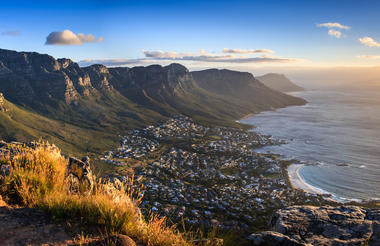Don’t be surprised if you don’t hear South Africans say Johannesburg. Most of the time, they call this city Jo’Burg, Joey’s, or even Joy’Burg.
In 1884, on a flat, stretch of yellow, sparsely treed veld in South Africa was a farm called Ostrich Springs. Actually, it was called Vogelstruisfontein, but Ostrich Springs is the rough translation. When gold was found in the area everything changed and two years later, the gold-mining town of Johannesburg sprung up. The Whitewater Ridge, or Witwatersrand as it known, is a largely underground geological formation holding the largest known gold reserves in the world. It is also one of Earth’s oldest geological structures. Ten years after the discovery, over 100 000 people of all nationalities called it home. Trees were planted to supply firewood, but more importantly, posts for the mine shaft. Over the years, Johannesburg became, and still is, the largest man-made forest in the world.
The Mponeng gold mine is the deepest operating mine in the world. Its current depth is 3.84km, but there are plans afoot to deepen the shaft to 4.22km. Visiting the gold mines and travelling deep below the earth’s surface is, if you’re not claustrophobic, an excursion not to be missed.
Gold is also the reason why Johannesburg is the world’s largest city not founded on a shoreline, bank of a river, or beside a large inland lake. It is now one of the world’s megacities. Johannesburg is the provincial capital of the Gauteng Province, the wealthiest province in South Africa. Its financial power and global trading make Johannesburg an alpha or power city. It comes as no surprise then that Africa’s Richest Square Mile – Sandton, is here.
Sandton City, an energetic hub of Afro-cosmopolitan glamour is one of Africa’s leading and most prestigious shopping centres. Combining the world’s most desirable brands with everyday leisure and entertainment, it offers an unparalleled shopping experience. It’s Central Business District houses almost 10% of South African companies listed on the Johannesburg Stock Exchange. Right in the middle of Sandton City is Nelson Mandela Square, named after South Africa’s first democratically elected president.
This recent history still vibrates through the fabric of South Africa and nowhere is this more apparent than in Vilakazi Street, Soweto – the large township began life as housing for mine workers. This famous location became home to two Nobel Peace Prize winners, Bishop Desmond Tutu a.k.a. the Arch, and the late President Nelson Mandela. Nelson Mandela’s former home is now the Mandela House Museum. Nearby is the Hector Peterson Museum and Memorial.
To really understand South Africa’s recent history, visit the Apartheid Museum. The exhibits, created by a multi-disciplinary team of curators and creatives, pay testimony to the events and human stories of Apartheid.
And then there’s Constitution Hill. No other South African prison incarcerated the number of world-renowned men and women. People such as Nelson Mandela, Mahatma Gandhi, Joe Slovo, Albertina Sisulu, Winnie Madikizela-Mandela and Fatima Meer. It was fitting then that the Constitutional Court judges, appointed by President Nelson Mandela, chose the Old Fort prison complex as the site of the new Constitutional Court, emphasizing its historical and symbolic importance.
Before gold, the history of the area began millions of years in the past. And the archaeological digs at the Sterkfontein Caves. Only 90 minutes from the city, this UNESCO World Heritage site, which includes the Cradle of Mankind are another fascinating excursion. So far, the Cradle has revealed more fossils of early hominids than any other site on Earth. You can learn more about this human history thanks to the award-winning, world-class Maropeng Visitor Centre’s exhibits, displays and archaeological sites.
But it’s not all history and gold. Johannesburg has amazing shops, restaurants, theatre, clubs, and gardens. It’s a city pulsing with life and energy. And if you are there during the rainy season, you might even experience of one of the famous and unforgettable Highveld thunderstorms!
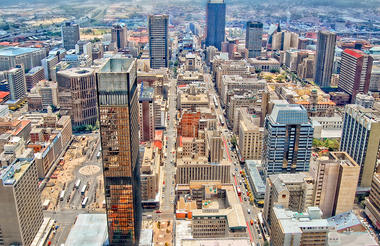
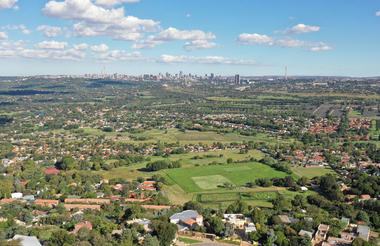
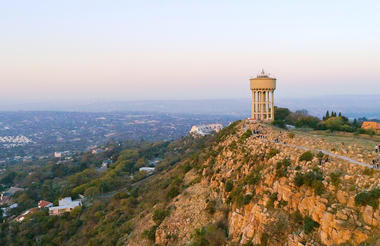



Over 1300 million years ago, the Pilanesberg area in South Africa’s North West Province, was alive with volcanic eruptions and overflowing magma. The result is an alkaline volcanic crater, one of three on Earth, that is one of the largest circular volcanic complexes of its type in the world. The rare geological features, rock types and formations attract geologists and photographers from all over the world. And we haven’t even mentioned the wildlife yet!
Man has lived here beneath Thabayadiotso, ‘the Proud Mountain’, since the Stone Age and has left his mark in a number of sites. During the apartheid era, the area was part of the then independent ‘bantustan’, Bophuthatswana. As the Park’s terrain lies in the transition zone between the Kalahari and the Lowveld with overlaps in mammals, birds, and vegetation, the Bophuthatswana President, Lucas Mangope, decided to convert the Pilanesberg into a game reserve in 1977 and re-introduce long-vanished wildlife and remove all non-native plant life from the region. Operation Genesis began. This mammoth achievement was the largest game resettlement in the world.
Today, the Pilanesberg Game Reserve is home to over 10 000 animals and has the world’s largest number of hyenas. Because of its ecologically rich and malaria-free location, this vast area dramatically increases your chances of encountering, among others, the Big 5, wild dog, Roan, Tsessebe, Sable antelope, cheetah, giraffe, hippo, zebra, and crocodile. There are more than 360 species of bird. You can immerse yourself in the natural world on exciting game drives or in the well-built, concealed photographic hides which provide a comfortable place to wait for that perfect shot. The Mankwe Dam is ideal for spotting animals pausing for a drink.
As it’s only 3 hours’ drive from Johannesburg, and is also close to Pretoria and Rustenburg, Pilanesberg National Park, the 4th largest Park in South Africa, is the most accessible and popular game reserve in the country.
It’s great for day trips and is also near the Lost City. In the Park, an array of activities is on offer, including guided walks, game drives, and hot-air balloon rides, traditional tribal dance performances, music workshops, and luxury spa experiences.






Idyllically situated in the Cape Winelands, this peaceful country retreat is one of the oldest towns in South Africa. The once sleepy little village was named Franschhoek, meaning 'French Corner' as it was founded by French Huguenots in 1688 alongside the original inhabitants, the Khoisan, who still live here. To the French Huguenots, fleeing violent religious persecution, the fertile valley must have seemed like heaven. The Huguenots named their farms after places in their old homelands, many of which continue to this day.
The original Cape Dutch architecture in much of the village is remarkably well preserved. Renovation and building restrictions are in place to preserve the spirit of the original settlers.
Completely closed off from the rest of the world on its eastern flank by the Franschhoek Mountains, the town can only be accessed from two routes. One of which Franschhoek Pass, is, in terms of valleys, gorges, and mountain peaks covered in snow in winter hard to beat for natural beauty.
World-class wine estates, quaint, upmarket boutiques, museums such as the Huguenot Memorial Museum where the signature of every 1685 Huguenot settler is on display, the Franschhoek Motor Museum with its unique and exciting collection of vehicles, motorcycles, bicycles and memorabilia from over 100 years of motoring history (by appointment only), and South Africa’s first Perfume Museum with an extensive and comprehensive permanent collection including antique masterpieces as well as workshops are just some of the unique delights of Franschhoek. Exploring the charming town’s centuries-old tree-lined streets, art galleries, world-class restaurants, Illustrious wine estates and secluded countryside retreats, delicious delis and spectacular scenery, all adds up to an unforgettable experience.


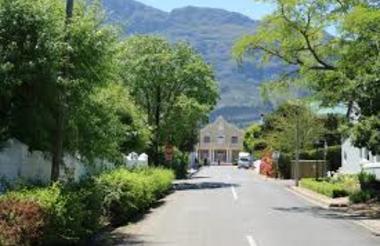
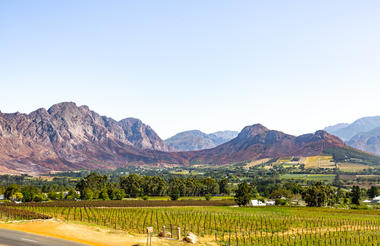
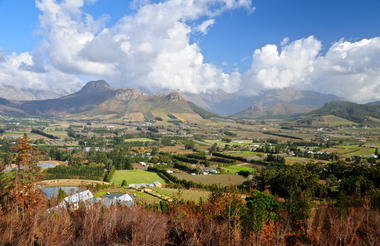
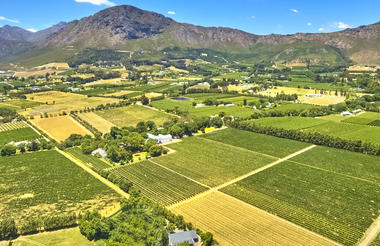
Over the centuries, French, Dutch, English, Malay and African influences have moulded a city replete with natural beauty, an eclectic culinary smorgasbord, and a rich history. This is Cape Town, the Mother City, the oldest city in South Africa. And it’s where modern South Africa began. The seat of the South African parliament is here making Cape town the legislative capital of South Africa.
Cape Town has been called Table Bay, the Cape of Storms, the Cape of Good Hope, The Cape, and directors of the English East India Company described it as ‘the Gibraltar of India’. It finally became known as Cape Town in 1773. The Dutch East India Company had sent Jan van Riebeeck to build a fort, as well as The Company Garden - a vegetable garden and fruit orchard to supply ships on their way to the East and Australia with fresh food. A remnant of the garden still exists in the city today, including one of the original Saffron pear trees which is still bearing fruit. It’s the oldest cultivated fruit tree in the country.
The most prominent and iconic feature of Cape Town is Table Mountain. One of the New Seven Wonders of the world, and part of the Cape Floral Kingdom World Heritage Site, Table Mountain is one of the most popular visitor destinations in Cape Town. From the top, you can see the whole of the city laid out before you, as well the Pacific Ocean lapping at the foot of the African continent, and further along the coast is the Atlantic Ocean.
The mix of ethnic influences have, over the years, created a city with a unique, creative and cosmopolitan flavour unlike any other city in South Africa. All of which can be experienced in the museums, art galleries, spectacular seafood, the Victoria and Albert Waterfront, the Two Oceans Aquarium, the historic and important Robben Island. Wildlife such as great white sharks, penguins, seals, and iconic African wildlife in the nearby national parks. Cape Town also has one of the most colourful and photographed suburbs in all of South Africa – the Bo-Kaap. The narrow cobble streets and brightly painted homes on the slopes of Signal Hill form what was historically called the Malay Quarter. It was where free slaves and Muslims settled in Cape Town and the only place where they were allowed to freely practice their religion.
Combined with architecture that is both historically important and beautiful, vibrant nightlife, world-class beaches and the weather to go with them, as well as the city’s proximity to internationally renowned vineyards, and cheese farms makes Cape Town the city with it all, and more.




